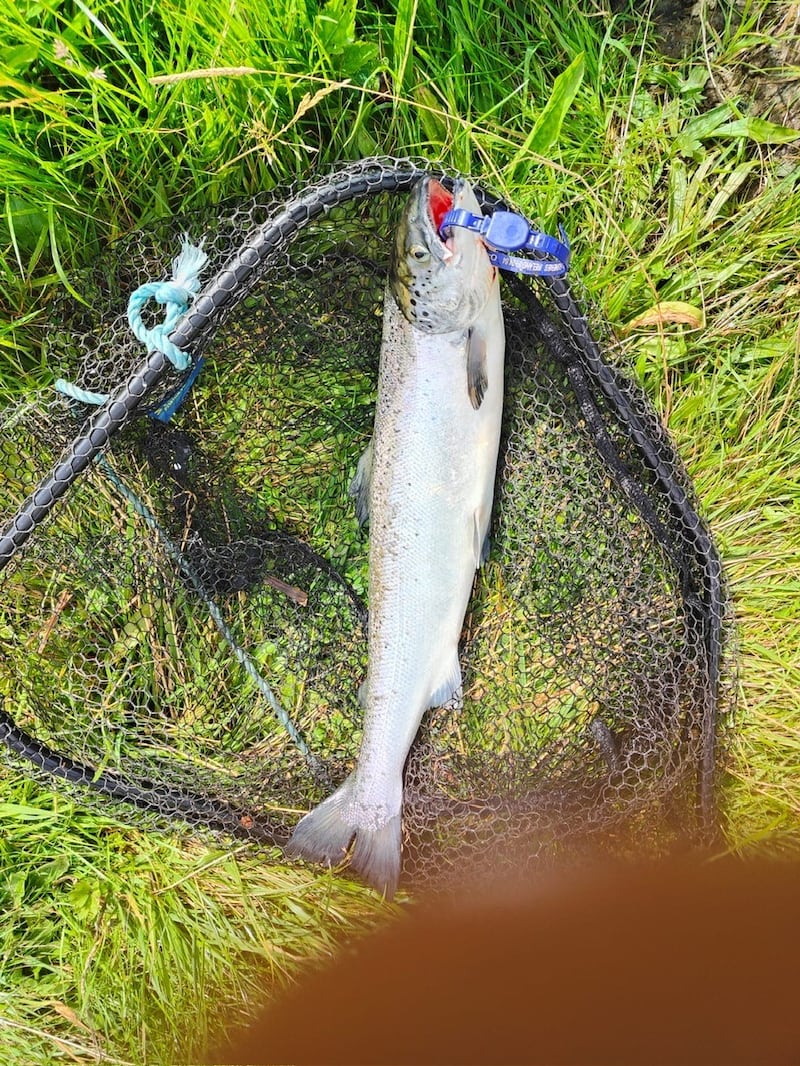When buying or eating salmon, the question “is it farmed or wild?” is frequently asked. But the days are long gone when wild salmon was widely available in Irish fish shops, on supermarket shelves or restaurant menus.
The product nowadays is invariable farmed in Ireland, with an increasing trend of being labelled as “organically farmed salmon”. This can be a source of controversy given circumstances in which the fish are reared.
The presence of farmed salmon imported from Scotland, Norway or the Faroe Islands, however, is increasingly evident – though it might be labelled as Irish on the basis of being processed or smoked here.
Irish farmed salmon are reared in large open cages, containing many thousands of fish, invariably located in shallow seawater or harbours – and concentrated along the western seaboard.
READ MORE
What is involved in producing ‘organically farmed salmon’?
Producing organically-farmed salmon, for the most part, means less density in cages (ie fewer fish); less use of antibiotics, more stringent use of pesticides, and the deployment of natural methods to get rid of sea lice (a common problem) by, for instance, adding “cleaner fish” such as wrasse or lump fish.
To be classified as organic, salmon farms must be certified. The escape of thousands of farmed Atlantic salmon in Killary Harbour last month was from a cage damaged during inclement weather. The salmon involved are classified by Mannin Bay Salmon Company as organic.

Is it possible to get wild salmon?
Yes, to a limited extent. Drift-netting of wild fish deployed out to sea was banned in Ireland in 2007 due to huge declines in salmon numbers returning to their rivers of origin. Drift-netting is permitted from June to July every year in some rivers and estuaries, but the numbers caught are relatively small. Invariably, they attract a premium price.
Because of the precarious state of native populations, salmon can be killed on only about 45 out of 149 designated salmon rivers. In reality, up to 80 per cent of fish are subject to “catch and release” by anglers.
Why are fish farms so controversial?
Firstly, it should be acknowledged fish is a rich source of protein, increasingly required to feed a growing global population. Arguably, farmed varieties are more sustainable due to relentless overfishing of native species across the planet.
The reality may be a little different, however, as use of artificial colourants, toxic pesticides and some feeds have attracted criticism. Salmon feed involves enormous volumes of ingredients, such as krill or sprat, which may lead to problems in the food chain for wild salmon and other fish. Use of fish meal and salmon oil from wild fish is controversial, while damage can be expected to shellfish from the chemicals used to treat diseases.
The appropriateness of using open cages is also increasingly questioned, so much so that many countries are banning such production units in favour of closed cages on land or moving to deepwater locations. Then there is the issue of escapees.
What is the risk when farmed salmon escape from cages?
Inland Fisheries Ireland is always concerned when escaped farmed salmon have entered freshwater rivers and lakes. They pose a significant risk to wild Atlantic salmon populations, especially at this time of year, as they return to their river of origin to spawn; a practice going back to the Ice Age.
The wild salmon of each river are unique genetically. Interbreeding with farmed salmon could compromise the genetic integrity of local salmon populations, which could impact their long-term resilience. This is in a scenario where wild populations are declining due to multiple pressures including global warming and water pollution.
The Killary escapees have now been discovered in seven angling rivers, despite efforts to remove them in recent weeks. Anglers are advised to tag the fish and send them to Inland Fisheries Ireland for analysis, including genetic testing. They are not a risk to human health as they are unlikely to be offered for sale, though Galway Bay Against Salmon Cages reported many of fish had lesions and looked diseased.
How important is salmon farming to Ireland?
Irish aquaculture produced 38,000 tonnes (worth €175 million) in 2021, the majority of which was “organic salmon” (€109 million). The Irish Farmers Association, which represents the sector, said this involved 2,000 direct jobs and 16,000 indirect jobs in seafood processing and ancillary marine activities – a not inconsiderable level of economic activity.
That is largely concentrated in the hands of MOWI, a Norwegian multinational, which is the largest producer of farmed Atlantic salmon, with an estimated of 80-85 per cent Irish market share and production facilities ranging from Donegal to Cork.
Irish output, however, is a fraction of what Norway, Scotland and the Faroe Islands are producing.
According to Salmon Watch Ireland director John Murphy, the outputs of all four markets indicate salmon farming is not suited to Ireland because of high mortalities that occur in the rearing process here. He cites cases of up to 45 per cent mortalities on some farms, mostly due to climate and warm water, when in other jurisdictions they are routinely in single figures.
- Sign up for push alerts and have the best news, analysis and comment delivered directly to your phone
- Join The Irish Times on WhatsApp and stay up to date
- Listen to our Inside Politics podcast for the best political chat and analysis












